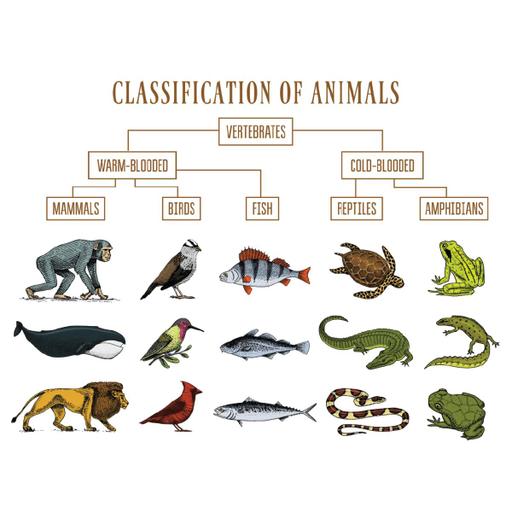5 Kingdom Classification
Presentations | English
On the basis of features such as cell structure, mechanism of nourishment, mode of reproduction, and body organisation, living organisms are grouped into five kingdoms: Protista, Fungi, Plantae, Animalia, and Monera. Monera is a bacterial, unicellular kingdom. They lack a clearly defined nucleus as well as cell organelles. Cell walls are present in certain creatures, whereas they are absent in others. As a result, certain species are heterotrophic whereas others are autotrophic. All of the creatures in the Kingdom Protista are unicellular but eukaryotic. These are the most basic eukaryotes, which can eat either autotrophically or heterotrophically. To move about, some organisms have appendages such as cilia, flagella, or pseudopodia. Kingdom Fungi includes heterotrophic, multicellular, and eukaryotic creatures. Their diet is saprophytic, meaning they feed on decaying organic materials. They have cell walls formed of a chemical known as Chitin. Some blue-green algae and fungi create a symbiotic relationship. Plantae are eukaryotic, multicellular organisms that have cellulose as a cell wall. They are autotrophs, meaning they produce their own food through photosynthesis. All plants belong to this kingdom. Plantae is separated into five divisions based on body differentiation and the presence or lack of specialised vascular tissue: Thallophyta, Bryophyta, Pteridophyta, Gymnosperms, and Angiosperms. Kingdom Animalia is a group of organisms that are multicellular, Eukaryotic, and do not have a cell wall. They consume food in a heterotrophic manner. They also have a lot of variety. Some species have a simple body, whereas others have a complex body that includes specialised tissue differentiation and bodily organs. There are numerous phyla and classifications within the Animal Kingdom. Porifera, Coelenterata, Arthropoda, Echinodermata, Chordata, and other phyla are among them.

37.00
Lumens
PPTX (74 Slides)
5 Kingdom Classification
Presentations | English
